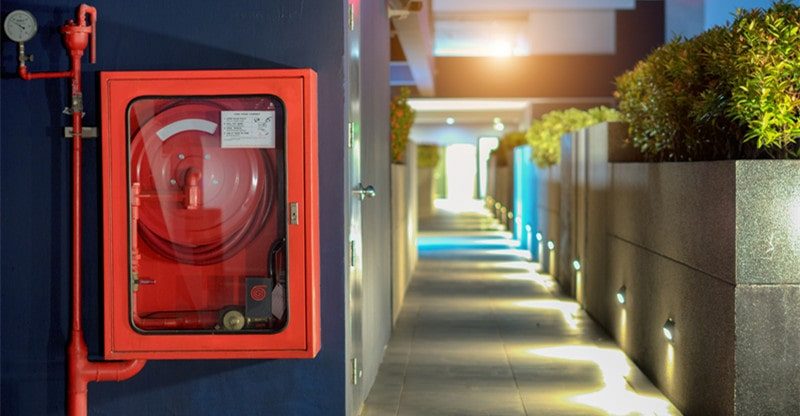Emergency Equipment Every Workplace Needs
Despite a rise in hybrid-working, there’s still a need for every workplace to ensure they have the correct emergency equipment. With over 650,000 workplace injuries every year, regardless of the number of employees who currently work from the workplace, having the right emergency equipment is a legal requirement. But just as important, employees need to know where to find it and how to operate it.
Fire extinguishers
Whilst the likelihood of a fire at work is rare for most workplaces, it’s still imperative that you have fire extinguishers installed. In the UK, building occupants should be no more than 30 metres from a fire extinguisher, so ensuring your workplace complies is essential.
UK fire extinguisher standards recommend that you should have a minimum of two ‘Class A’ extinguishers on every story of the building and should be replaced or given an extended service / replaced every 5 years.
First aid kits
First aid kits should be on hand and clearly labeled. Every member of staff must know where the first aid kit is kept, and the kit should be checked regularly and topped up every time something is used.
There should also be a logbook with the first aid kit that is filled in for every injury, regardless of how minor. Depending on your industry, you may have a custom first aid kit.
Key safes
Key safes should be installed in the event that a third party, such as paramedics need access to a locked room following an incident. Ideally, they should be kept in a secure location and keys should be coded – and the codebook kept separate from the keys, especially overnight.
Warning signs
Under the Health and Safety act, employers must provide safety signs in the workplace if there is a significant risk that can’t be avoided or controlled in any other way. Signs should be installed at a reasonable height so they are visible for all – regardless of whether your workplace is open to the general public or not.
Emergency lighting
In every workplace, emergency routes and exits must be indicated by signs. The emergency routes and exits that require lighting must have an illuminated sign that provides an adequate amount of light for the area in the event that normal lighting fails.
Current UK regulations require the provision of horizontal illumination at floor level on the centre line of a defined escape in any commercial building.
But it’s not just the emergency equipment that’s important. Your employees need to know where to find the equipment and how to operate it too, so creating a training program should be part of your emergency protocol.



